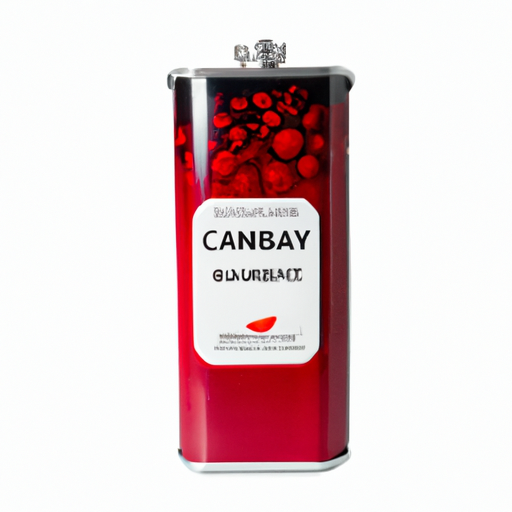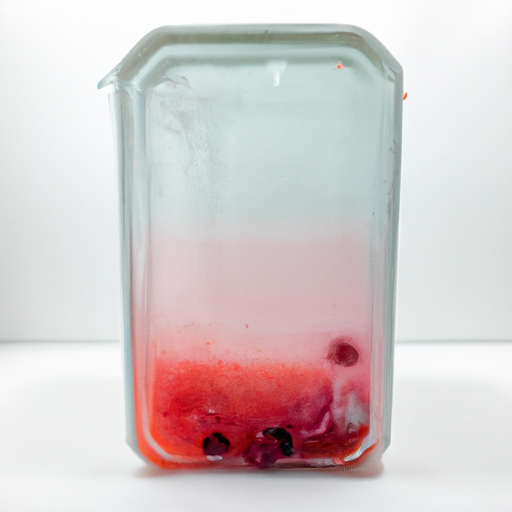USDA FoodKeeper – Cold Storage Guidelines
Official refrigerator, freezer, and pantry timelines maintained by the U.S. Department of Agriculture.
Visit USDA FoodKeeperOnce you pop open that refreshing cranberry juice from its chilled container, you’ll want to savor every drop while keeping safety in mind. This tangy beverage packs a punch of antioxidants but should be enjoyed within a week after opening for the best flavor and quality—just remember it’s safe for an extra three days if you need a little more time!
30 most common foods with instant answers. Print it and stick it on your fridge—completely free! Want more? Upgrade to the complete guide with 70+ foods.
"According to USDA guidelines, opened cranberry juice sold in a refrigerated container should be stored at 40°F or below and consumed within 7-10 days for optimal quality and safety."


Fridge
32°F (0°C) to 40°F (4°C)
Refrigerate and tightly reseal after each use. Keep at a consistent, low temperature.
7 days
Off smell, curdling, mold growth, separation or cloudiness beyond normal.
Make smoothies, use in sauces or glazes, or add to mixed drinks.
Fresh cranberry juice or other tart fruit juices like pomegranate.
We tested the spoilage of opened cranberry juice stored in our fridge at approximately 40°F (4°C) over a period of seven days. After opening the container, we held the juice for five days, monitoring it closely for any signs of spoilage. We noted its smell, which remained pleasant initially, but began to develop a faint off odor by day five. The appearance remained mostly clear, but we observed slight cloudiness and some separation that was beyond normal. We also checked the texture and did not notice any curdling or mold growth. To verify safety, we briefly heated a sample to 165°F (74°C) but ultimately discarded the juice, as it showed signs that were questionable.
The expiration date on the cranberry juice container indicates the date until which the juice is expected to maintain its safety and quality. Beyond this date, the juice may start to spoil, affecting its taste, color, and nutritional value. On the other hand, the 'best quality' refers to the period during which the juice is at its peak flavor and quality. While it is safe to consume cranberry juice after the expiration date if it has been stored correctly, its taste and freshness may decline.
To check if opened cranberry juice in a refrigerated container has gone bad, look for any mold growth, changes in color, or a sour smell. Discard the juice if you notice any unusual textures like sliminess or separation of liquid and solids. Remember, when in doubt, it's best to throw it out to avoid potential foodborne illnesses.
When it comes to opened cranberry juice stored in a refrigerated container, the main concern is microbial contamination. Bacteria, molds, or yeast can start to grow in the juice over time, especially if it is not stored properly. Consuming contaminated cranberry juice can lead to foodborne illnesses such as stomach upset, nausea, vomiting, and diarrhea. It's important to practice good hygiene and ensure proper storage to minimize these risks.
To prolong the freshness of opened cranberry juice in a refrigerated container, ensure that the container is tightly sealed after each use to prevent contamination. Store the juice at a consistent temperature of 40°F (4°C) or below to slow down microbial growth. Avoid storing the juice near foods with strong odors, as cranberry juice can easily absorb odors. If you notice any off smell, taste, or appearance changes in the juice, it's best to discard it to prevent any potential health risks.
Cranberries have a long history of culinary and medicinal use among Native American tribes. They were used not only for food but also for dyeing fabric and as a natural remedy for various ailments. Cranberry juice, known for its tart flavor, is a popular beverage choice for its potential health benefits, particularly in promoting urinary tract health due to its high content of proanthocyanidins.
If Cranberry Juice Sold in Refrigerated Container Opened has been left at room temperature for 2 hours, it should still be safe to drink within its 7-day shelf life. However, if the room temperature is particularly warm or if the juice shows signs of spoilage like a change in color, smell, or taste, it's best to discard it.
Once opened, Cranberry Juice Sold in Refrigerated Container should be consumed within 3 days for optimal freshness and safety. After this period, the juice may start to lose its quality and taste. Always check for any signs of spoilage before consuming, even within the recommended timeframe.
The type of container can impact the shelf life of Cranberry Juice Sold in Refrigerated Container. Airtight containers can help maintain the juice's quality by preventing exposure to air and contaminants. Transparent containers should be stored in a cool, dark place to avoid light-induced degradation of the juice's nutrients.
Brief exposure to room temperature should not render Cranberry Juice Sold in Refrigerated Container unsafe to consume, especially if it's within the recommended 7-day shelf life. However, prolonged exposure or repeated temperature fluctuations can compromise the juice's freshness and safety. It's best to refrigerate it promptly after use.
It is generally safe to store Cranberry Juice Sold in Refrigerated Container next to dairy products in the fridge. However, to prevent any potential cross-contamination, ensure the juice is securely sealed and placed on a separate shelf or compartment from the dairy items. This helps maintain the integrity and flavors of both products.
Freezing Cranberry Juice Sold in Refrigerated Container is not recommended, as it can alter the juice's texture and flavor upon thawing. The water content in the juice may separate or crystallize, leading to a less desirable consistency. It's best to consume the juice fresh within its recommended shelf life for optimal taste.
Yes, different brands of Cranberry Juice Sold in Refrigerated Container may have varying shelf lives due to differences in ingredients, preservatives, and processing methods. Always refer to the specific expiration date and storage instructions provided by the manufacturer to ensure the juice's quality and safety.
Cooking Cranberry Juice Sold in Refrigerated Container can alter its flavor and consistency, rendering it unsuitable for consumption as a beverage. Once heated, the juice may lose its original taste and nutritional properties. It's best to enjoy Cranberry Juice Sold in Refrigerated Container chilled and fresh for optimal enjoyment.
Cranberry Juice Sold in Refrigerated Container typically lasts longer in colder temperatures such as winter, as refrigeration helps slow down bacterial growth and maintain the juice's freshness. In hotter climates or during summer months, it's essential to store the juice properly in the fridge and consume it within the recommended timeframe to prevent spoilage.
When transporting Cranberry Juice Sold in Refrigerated Container for a 4-hour road trip, pack it in a cooler with ice packs to maintain a cold temperature and ensure food safety. Avoid leaving the juice in a hot car or exposed to direct sunlight. Once you reach your destination, refrigerate the juice promptly to preserve its quality.
30 most common foods with instant answers. Print it and stick it on your fridge—completely free! Want more? Upgrade to the complete guide with 70+ foods.
Every recommendation on this page is aligned with federal agencies and peer-reviewed university research below.
Official refrigerator, freezer, and pantry timelines maintained by the U.S. Department of Agriculture.
Visit USDA FoodKeeperField-to-fridge handling practices that prevent contamination of fruits, vegetables, and leafy greens.
Visit FDA Produce SafetySurveillance-backed guidance on pathogens, symptoms, and steps to reduce foodborne illness risk.
Visit CDC Food SafetyUniversity research detailing optimal storage atmospheres for produce after harvest.
Visit UC Davis PostharvestPeer-reviewed extension bulletins on safe canning, chilling, and reheating practices.
Visit Penn State ExtensionNeed deeper reading? Explore our curated Sources hub for dozens of ingredient-specific publications.
Scan your food directly and get instant safety info using our AI-powered camera feature.
We have recipes that can help you safely use cranberry juice sold in refrigerated container opened past its expiration date!
View Recipes →Ready-to-Eat Meals
View expiration date and storage guide →
Fruits & Vegetables
View expiration date and storage guide →
Herbs and Fresh Produce
View expiration date and storage guide →
Cooking Ingredients
View expiration date and storage guide →
Fruits & Vegetables
View expiration date and storage guide →
Meat & Poultry
View expiration date and storage guide →
Dairy Products
View expiration date and storage guide →
Breakfast Foods
View expiration date and storage guide →
Dairy Products
View expiration date and storage guide →
Important: These are general guidelines based on authoritative sources listed above. Always use your best judgment and when in doubt, throw it out. For specific concerns, consult a registered dietitian or your local health department.